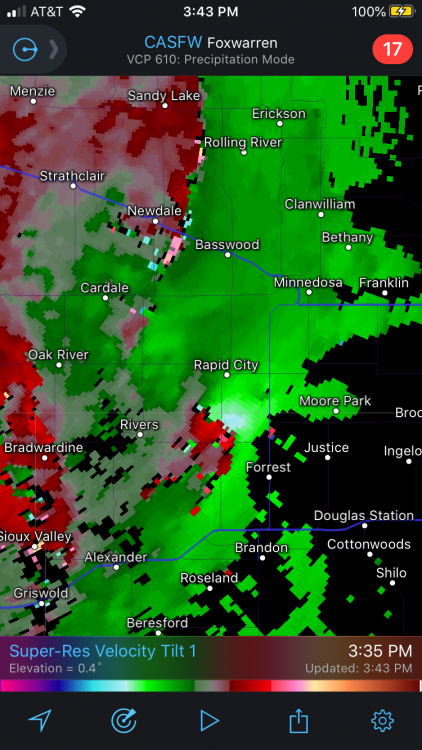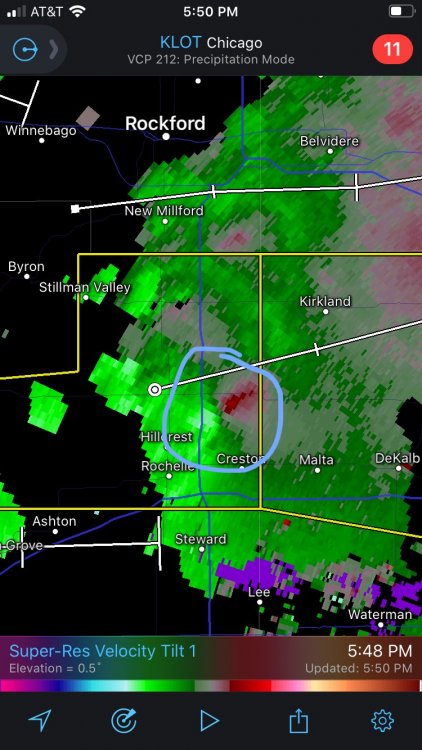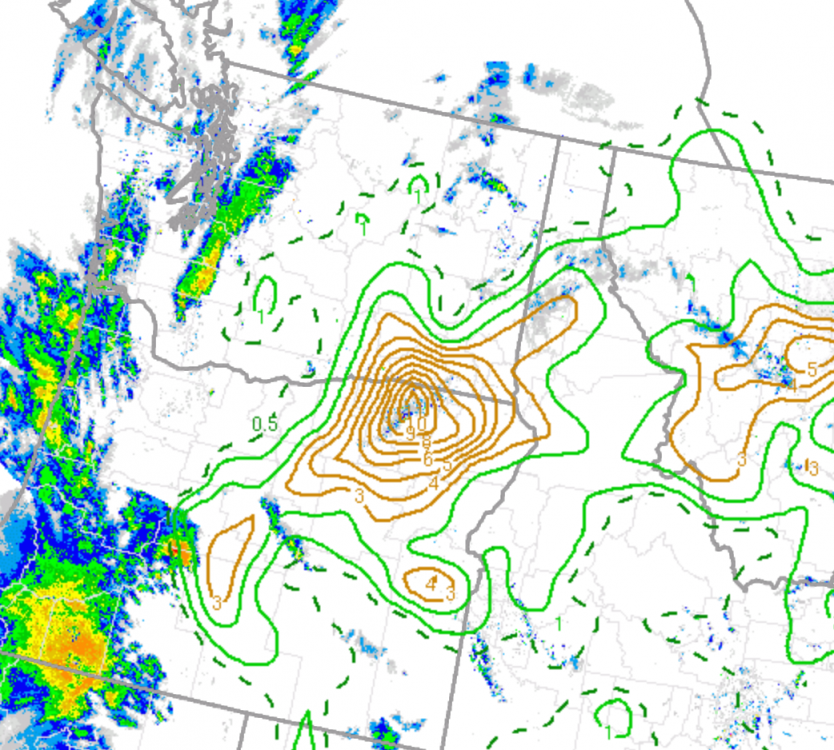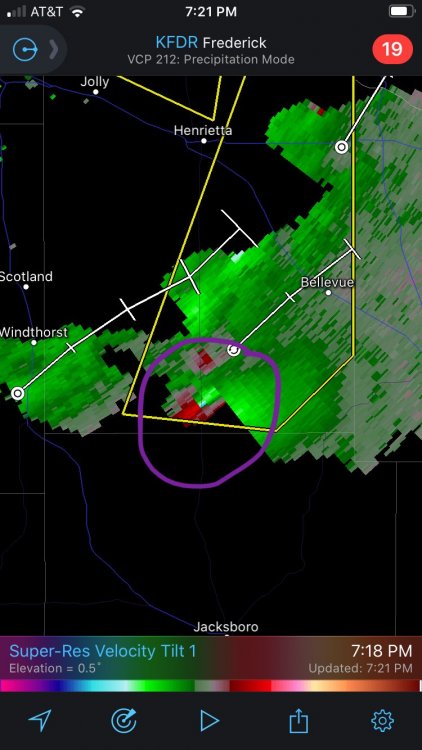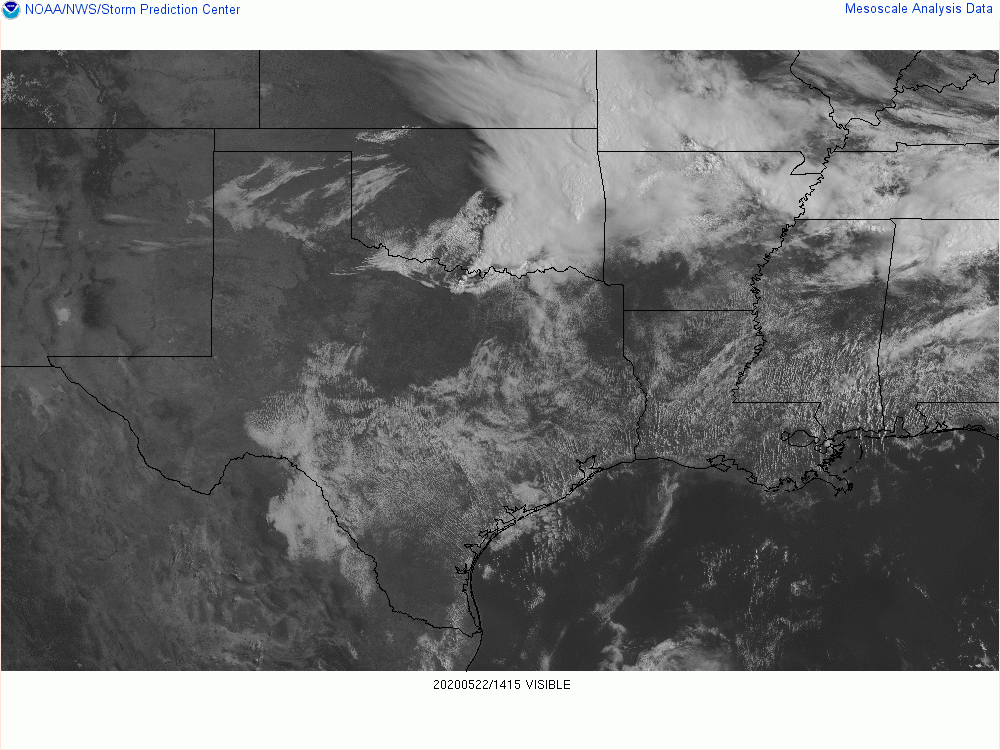-
Posts
532 -
Joined
-
Last visited
Content Type
Profiles
Blogs
Forums
American Weather
Media Demo
Store
Gallery
Everything posted by Sydney Claridge
-

Severe Weather Threat 8-14-20
Sydney Claridge replied to cheese007's topic in Central/Western States
That line up by Saint Cloud just lit up with 4 tornado warnings. Looks like another couplet is forming on a tornado-Warner supercell (ahead of the line) just north of Brownton, MN as well. The Brownton storm might try to make a run at the Twin Cities metro if it holds together. -

Severe Weather Threat 8-14-20
Sydney Claridge replied to cheese007's topic in Central/Western States
I'm starting to wonder about those storms west of the Twin Cities. Not seeing anything too strong with rotation at this time, but they are all isolated storms in a favorable environment. The severe-warned storm south of Buffalo Lake may be one to watch. There also appears to be a couple of couplets near West Union (along I-94), but these look to be on the frontal boundary itself. -

General severe weather discussion
Sydney Claridge replied to Quincy's topic in Central/Western States
I've noticed that SPC has included hatching on 15% wind risks, starting earlier this year, when there is potential for a major damaging wind event but there is a degree of uncertainty as to whether said threat will actually materialize (such as capping, etc.). -

General severe weather discussion
Sydney Claridge replied to Quincy's topic in Central/Western States
We have a tornado watch in North Dakota for today. Meanwhile, across the Canadian border in Manitoba it looks like there is a storm with significant rotation: -
-
There is also a severe-warned storm behind this one (Marion, OH area). Would not be surprised if that one could clip the northeastern portions of the Columbus area only if that storm takes a right-turn. Ingredients for tornadoes are much better in northern Illinois per SPC mesoanalysis. Watch those storms west of Rochelle and Rockford as they move east, could be a concern as they approach Chicagoland.
-

General severe weather discussion
Sydney Claridge replied to Quincy's topic in Central/Western States
0-3km EHI is as high as 10 along the OR/WA border. I have never seen values that high in the Pacific Northwest before, but keep in mind that LCL heights are very high. Storm south of (and moving towards) Bend, OR has lower LCL heights. -
Even though the one to the south is the tornado producer, that storm to the north of Streator (near Ottawa) still bears watching as it is moving straight for the Chicago metro area.
-

Severe Weather May 20-25, 27th, 2020
Sydney Claridge replied to Quincy's topic in Central/Western States
Aside from the risk for hail, tornadoes, and wind, I am getting very concerned about flooding potential near and west of Bowie, TX. These storms have stalled over this area for quite some time, with heavy precipitation, and they may only now be starting to increase their forward motion. There are also other storms behind this complex as well. The big question is whether this complex will take a right turn and impact the northern areas of the Metroplex. -

Severe Weather May 20-25, 27th, 2020
Sydney Claridge replied to Quincy's topic in Central/Western States
I wonder if that is an MCV associated with that activity near Bowie, TX? Storm motions seem to be rotating around a point near Bowie. -

Severe Weather May 20-25, 27th, 2020
Sydney Claridge replied to Quincy's topic in Central/Western States
Storm over Wichita Falls looks to be developing rotation. It looks as if that storm has caught up to the outflow boundary ahead of it and is latching onto that OFB. -

Severe Weather May 20-25, 27th, 2020
Sydney Claridge replied to Quincy's topic in Central/Western States
I'm starting to wonder if SPC overestimated the effects of the outflow boundary with respect to their re-positioning of the ENH risk earlier. The significant hail is currently materializing north of the ENH risk and the hatching, but that storm SW of Bellevue, TX still bears watching, especially if it becomes a right-mover. That storm has just taken on supercellular characteristics (including a hook), so it may take a right turn pretty soon. EDIT: couplet SW of Bellevue: -

Severe Weather May 20-25, 27th, 2020
Sydney Claridge replied to Quincy's topic in Central/Western States
Tornado warning also issued for that storm just northwest of Wichita Falls. Radar indicated at this time. EDIT: confirmed tornado west of Burkburnett according to livestream from Channel 6 in Wichita Falls. -

Severe Weather May 20-25, 27th, 2020
Sydney Claridge replied to Quincy's topic in Central/Western States
Looks like there is a major hail storm ongoing northwest of Wichita Falls now, it is warned for up to 3-inch hail. There may be some additional attempts at convective initation in the Graham/Jacksboro area per radar and satellite imagery; some of the ingredients there seem better for severe weather (supercell composite, SigTor, EHI, etc.), compared with southern OK, although that Red River storm is in a perfect position to produce large hail. -

Severe Weather May 20-25, 27th, 2020
Sydney Claridge replied to Quincy's topic in Central/Western States
Attempts at convective initiation around Graham and Jacksboro seem to be struggling at this moment. Some light radar returns are present there, although nothing significant has formed yet. -

Severe Weather May 20-25, 27th, 2020
Sydney Claridge replied to Quincy's topic in Central/Western States
Looks like some attempts at convective initiation may be occurring near Jacksboro, TX. -

Severe Weather May 20-25, 27th, 2020
Sydney Claridge replied to Quincy's topic in Central/Western States
Enhanced risk is now centered over north Texas, including the Metroplex, and has been trimmed away from southern OK. OFB is now over the Metroplex, albeit with strong heating on the immediate north side of the boundary based on observations and SPC outlook. -

Severe Weather May 20-25, 27th, 2020
Sydney Claridge replied to Quincy's topic in Central/Western States
The question will be how much further south the OFB gets before storms initiate (which will be a while). Though not the most current, satellite imagery clearly shows the OFB location just south of the Red River. SPC thinks that the boundary will eventually stall; needless to say I'm going to get a bit concerned about severe storms particularly if the OFB stalls out near the Metroplex, since the OFB may very well be the focal point for afternoon severe storms. -

Severe Weather May 20-25, 27th, 2020
Sydney Claridge replied to Quincy's topic in Central/Western States
Yep, the 10% with SigTor hatching was just removed and the ENH was shifted southwards somewhat. On the flip side, the hatching for significant hail now covers much of the Metroplex (30% hatched), with a 5% tornado probability on top of that. -

May 13-19 Severe/Heavy Rain threats
Sydney Claridge replied to Tim from Springfield (IL)'s topic in Lakes/Ohio Valley
That storm is moving straight for the Columbus metro area. Fortunately the ingredients today are not the most favorable for anything more than brief tornadoes, but it is always something to watch when a major metropolitan area is downstream from a potentially tornadic thunderstorm. -

Severe Weather May 13-15th, 2020
Sydney Claridge replied to cheese007's topic in Central/Western States
Have definitely seen what seem to be some supercell structures on radar there, but overall the storm mode in Iowa seems messy right now. Obviously today is not a slam-dunk severe weather day, being only a slight risk, but if anything the most intense storm near New Virginia, IA looks to be a possible HP supercell given its radar signature. -
Southwest Tarrant County looks to get hammered should this storm continue to hold together.
-
Those storms are definitely outflow-dominant now. The outflow boundary has surged well ahead of the storms, and is currently over central Dallas County and southern Tarrant County (and is just north of the KFWS radar site). If these storms had maintained unimpeded inflow at or near the surface we would probably be having a major hailstorm over DFW right now, but fortunately that outflow surged out ahead of the storms.
-
Interestingly enough there might be some outflow out ahead of this storm, from west of Thackerville over to Muenster and Bowie (which is evident on the KFWS radar). Might be a sign of a possible weakening trend, but this does not appear ahead of the lead storm over Thackerville.
-
Hopefully the hail potential winds down somewhat before then, but you can never count on that (the cap is one finicky beast at times). Collapsing storms can also produce damaging wind gusts on occasion, so even if the hail threat diminishes, there is that risk (although this storm is already capable of damaging wind as it is). I would not be surprised to see a local extension of the severe thunderstorm watch into Tarrant and Dallas counties.



